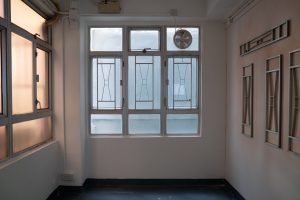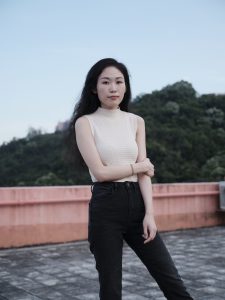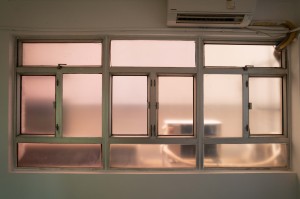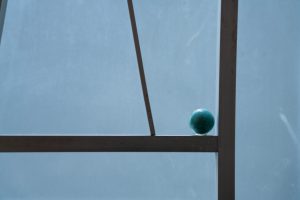artist support programme (ASP) alumni: Nicole WONG
「藝術家支援計劃」獲選藝術家:王思遨
閱讀完整訪談 (中文) >>>
–
Nicole Wong Si-ngo (b.1990, Hong Kong) graduated from Nottingham Trent University, United Kingdom in 2012, and now lives and works in Hong Kong. Nicole’s minimalistic multidisciplinary approach thrusts her work into the realm of an investigative medium through which she asks equivocal questions. These involve literal wordplay and the illusive concept of time, resulting in a poetic narrative of broken communication. In 2013, she won the Hong Kong Contemporary Art Award and was a finalist in the Hong Kong Art Prize and London Griffin Art Prize. Wong has participated in exhibitions including ‘At Wit’s End’ (Asia Culture Center, Gwangju, 2016), ‘Self Criticism – How much time we have wasted?’ (Inside Out Art Museum, Beijing, 2017), ‘Superposition: Equilibrium & Engagement’ (21st Biennale of Sydney, 2018), ‘A Tree Fell in the Forest and No One’s There’ (Power Station of Art, Shanghai, 2018), and ‘Post Anthropocene’ (Taiwan Biennale, Tainan, 2020).
Nicole Wong was supported by soundpocket’s Artist Support Programme 2012–13.
Personal website >>>
Interview excerpt:
10.06.2021 (Thu)|8pm
Online interview

photo by Wong Ka-wing
◎ “Twilight Grey in Urban Natural” in ‘10 Years of ASP’: rediscover everyday objects
soundpocket: You mentioned you would like to present your work in new ways, avoiding stereotypical creations or presentations. Can you tell us more about how these differ from your past presentations?
Nicole: I used to create based on a context, presenting something apart from the artwork itself; so that when people asked me about the artwork, I chose to tell a story which was the context for the work, and that always composed a huge part of my creation. It seems I needed to illustrate where the work came from, what certain parts of the work represented, what I wanted to say through the work, or how the universal issues portrayed in my work were related to you.
In ‘10 Years of ASP’ or my MFA graduation exhibition in CUHK [Chinese University of Hong Kong], I no longer tried to complete the artworks in this way, or I was trying to tell the audience that an artwork can become an artwork even without a ‘context’. Given the installation “Twilight Grey in Urban Natural” in ‘10 Years of ASP’ which you are more familiar with – but you see, even here I’m explaining what it is about again, and categorizing my artwork as an installation… But actually those window frames already existed in the room [the exhibition space], and what I wanted was to say: this artwork wasn’t something I created or brought into this exhibition. On the contrary, it’s something the exhibition brought to me, or the encounters that it brought to me.
When I first visited Fu Lee Loy Shopping Centre, I realized how its renovation and decoration is different from the general gallery or museum space. There are many domestic window frames or decorations there which are very “Hong Kong style”; these little details can actually reflect where this exhibition is being presented. Even if you just saw the installation shots of the exhibition online, you would immediately know that this is not from England or Japan, but Hong Kong. This is just like when I was working on “Nocturnal pusuis” (2019) with “Cross Harbour Terminal” and Zit Dim in Tainan, I realized the window frames in the exhibition space in Tainan have their own distinctive characteristics, they are just like a symbol of an identity. I pay attention to the initial objects or setting of the place itself, which portrays a lot of information about the space. Therefore, I don’t really want to turn Fu Lee Loy Shopping Centre into another usual venue for presenting art; I just want to focus more on the symbolic part which is most identifiable.
What caught my attention most was the window frame and the landscape of the street; yet actually there is no “landscape”, but just the colour of the wall of the opposite building – this is what I wanted to focus on mostly. Throughout the entire installation process, I’d been thinking of how to emphasize this viewing experience, such that when you’re looking at an installation, it leads you to rediscover the place itself – that is, before the installation or dismantling of the artwork, how this place was supposed to initially be. My intervention in the space has a relatively directing influence, guiding people to notice the window frames; if the window frames were just around the window as usual, you might neglect them. Everyday objects are amazing like that. You may also see there is a ‘cross mark’ on the wall. It was the shadow of the tape on the window, which was being removed after my first visit to the space. These might be some ordinary details—some tape on the window that no one will ever pay attention to—yet I think working on an exhibition provided me many privileges to reinspect these details. This is about an experience of observation. Even if it’s an installation, it is an object-based installation that I would like the audience to have the same experience of observation.
◎ Found text: The greyish blue of “Twilight Grey in Urban Natural”
soundpocket: Besides found objects, sometimes you will create works based on the context provided by some found text. Do you still have this artistic practice?
Nicole: This is a personal preference. I share the same fondness for found objects and found text; or when I’m handling text, it feels like I’m keeping it in a collection. The text I collected and that I used in my artwork might be some text I heard or read, and this is a kind of found material. For me, found objects, found text, or recordings are the same; I have the same feeling towards them.
Here’s a little story about the title “Twilight Grey in Urban Natural”: there was an interesting scenario after my first visit to Fu Lee Loy Shopping Centre. My companion that day remembered that the colour of the wall of the opposite building was grey, yet I remembered it as blue. When I looked back at the photos, it was indeed blue, but my friend argued that it was surely grey. Then I searched via the google map satellite images, and zoomed into the building, to check the colour of the gap, and it seemed to be a greyish blue. I really started to wonder if it’s blue or grey? It was certainly blue from my impression, but I wondered if it’s because the weather that day that made me find the grey a little bit blueish? Or is it because the colour of the floor in the space is greyish blue, and that made me think the opposite building shares the same colour? Anyway, it was eventually just an impression.
The title of the work hopes to be able to guide the audience to notice the landscape outside the window, how the weather would affect it, and your experience of observing colour. I started to search for the names of the tints of paint for outdoor walls, used by major brands; these names are beautiful. I picked some colours that recalled my memory of the wall and named the piece after it: “Twilight Grey in Urban Natural”. This was a fun fact about this work. Those colours picked at the end describe the whole experience, just like a lovely coincidence, a pun for the work itself, and its title.


